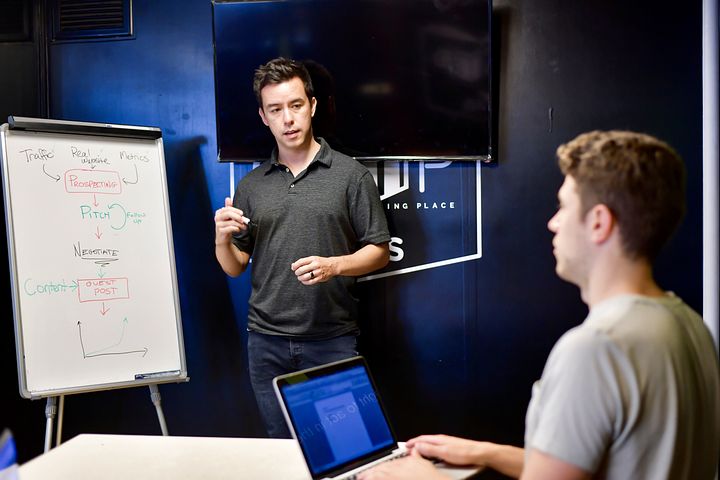If you had to make a list of all the roles that are essential in the world of technology, software developers would undoubtedly be right at the top.
A successful piece of software must not only meet the current needs of all users. It also needs to be agile enough to anticipate future needs that the users themselves may not even be currently aware of. Software developers are a big part of how this is able to happen, as is true with other elements like preview environments that take the larger UI and UX into consideration.
Oftentimes, a software developer will work on a project as a part of a larger team. This takes not only collaboration but also ingenuity, access to the right systems, leveraging the most appropriate tools and products, and more.
The goal of any software development team should involve bringing individuals together to form something much more powerful as a collective than any one of them could be on their own. Getting to this point isn’t necessarily difficult, but it will require you to keep a number of important things in mind along the way.
Table of Contents
1. Clearly Communicate All Project Requirements
By far, one of the most important ways to build a successful software development team involves making sure that all requirements are properly communicated at the outset of the process. This includes not only during the team selection process, but it can and should influence larger hiring decisions as well.
All software development team members will bring their own unique skills to the table. Some will be specialists who excel at one particular task, while others will be more generalist in nature. They’re all here to do a specific job incredibly well – but unless they know exactly what is expected of them and why it matters, you can’t be confident that they’ll be able to rise to the occasion. There are excellent software developers out there who may not be an appropriate fit for the team you’re trying to build – the way to determine whether this is a situation that you find yourself in is to make sure that all project requirements are understood before any other activity takes place.
2. Have Trust in the People and in the Process
Along the same lines, always remember that the value of a team is greater than the sum of its parts. That is to say, if you’re hiring people because they are specifically highly skilled in one particular area, you need to value their input when it comes to the reason they are here in the first place.
If a software developer or engineer identifies a potential problem in a preview environment that happens to fall into their area of expertise, listen to them – don’t write them off simply because they’re not a project manager. You brought these people together for a reason, it would be a mistake to treat them as little more than “hired hands” when they have so much more that they can add to what you’re trying to accomplish.
3. Transparency is King
Another step that you can take to bring together successful software development teams involves valuing transparency in the process whenever possible.
Simply put, the more aligned your individual team members are with the project they’ve been asked to contribute to, the more in line that final product will be with your intended results. Don’t give someone a generic outline and expect them to devote a significant number of hours each day to help you accomplish a goal that they ultimately don’t believe in. You may get a finished product that meets expectations in a technical sense and that lines up with what you saw in your preview environments, but you certainly won’t get one that exceeds them.
In the world of software development, these types of details matter. People need to know why they’re a part of the team. They need to see what value their individual contribution is bringing. They need to know what they’re spending so much time and energy trying to accomplish and why it matters in the grand scheme of things. The more transparent you can be, the more engaged your team members will be in the process – paving the way for them to go above and beyond to overcome any challenge, regardless of how difficult it might seem.
4. Capabilities and Technical Skills Are Two Different Things
Finally, when it comes to selecting software development teams, understand that technical skills and overall capabilities should not be treated equally.
Someone could have what is objectively an impressive resume based on their education and experience but still not excel within the larger team that you’re trying to create. People need to be able to collaborate with one another. They need to believe in not only themselves but each other. A person who is an exceptional software developer as an individual may not function as well on a team, and vice versa. Understanding this discrepancy and keeping it in mind is essential for bringing these types of people together.
Overall, it’s important to understand that software development teams are critical for a reason – they’re trying to accomplish a goal collectively that none of them could do as individuals. Because of that, they all need to be able to work together – both within the context of the collective and in terms of what they’re being asked to accomplish. Following best practices like those outlined above will go a long way towards guaranteeing precisely that, which will only create better experiences for everyone involved moving forward.
TheITbase
Related posts
Hot Topics
Maximizing Efficiency: Essential Tactics for Quick File Uploads on the Web
Would you like to have your patience tested on a random day for no reason? Of course not. The same…
AI in SEO: Revolutionizing Search Engine Optimization with Artificial Intelligence
Artificial Intelligence (AI) has emerged as a digital marketing game-changer, particularly in the realm of Search Engine Optimization (SEO). What…



